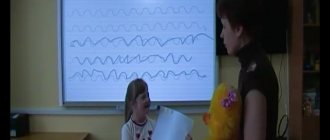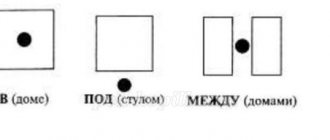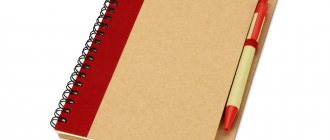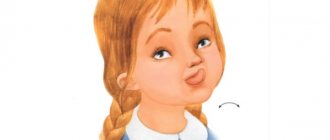Tree structure
The root nourishes the tree, absorbing necessary substances and moisture from the soil and transferring them to the trunk. The root is also responsible for the stable position of the tree. It is thanks to the spread of roots in the soil that the tree maintains its vertical position. The roots can go to a depth of up to 30 meters and grow in different directions over considerable distances - up to 100 meters. Often, especially on uneven terrain, the roots come to the surface of the ground and their complex interweavings can be observed.
The trunk is the support for the entire tree. And in every sense. It not only physically holds up the top part of the tree—the leaves and branches—but also serves as a conductor of nutrients from the roots to the crown. The trunk of the tree is strong and dense, it is usually covered with bark, under which the wood is hidden. In almost all trees, the trunk has the shape of an elongated cylinder, wider at the bottom, at the root, and gradually tapering at the top.
The upper part of the plant - its branches and leaves - form the crown of the tree. The crown comes in a variety of shapes: spreading (branches grow in different directions), spherical, weeping (when the branches are directed downwards), columnar (approximately the same in width over the entire height), pyramidal (tapering towards the top), umbrella-like (really resembling an umbrella on long handle) and creeping when the crown is bent to the ground.
In nature, other types of crowns can be observed, but they are classified as deviations from the norm, deformations, “deformities,” although in fact they sometimes look attractive and interesting.
What types of trees are there?
There are two types of trees: deciduous and coniferous. It is quite easy to distinguish them by the appearance of their leaves.
In deciduous trees, the leaves are flat plates of different shapes. Most often green. Such trees are also called deciduous because the leaves are not on them all year round: in the fall they lose color and fall off. In winter, the tree has no cover, and new leaves grow from the buds only in the spring.
In coniferous trees, leaves (yes, they are also called leaves) grow in the form of thin needles, needles. Coniferous trees are called evergreen because their needles do not lose color in the fall, and they do not fly off by winter. At the same time, one should not think that the needles do not change throughout the life of the plant - coniferous trees also change their cover, but this happens gradually, not simultaneously for all leaves (needles) and without reference to a certain time of year.
Didactic games “Trees” in the younger group
We offer simple and exciting games that help younger preschoolers get acquainted with the world of flora.
One, two, three - hug the tree!
It is better to play outdoor games in a park where there are many different plants. The presenter names a tree of a certain type, says: “One, two, three - hug the tree!” Children look for the plant named by the leader, and when they find it, they run up to it and clasp it with their hands.
Find the odd one out
The game is designed to develop visual perception and observation skills. First hang natural objects that are not related to them on the plants growing in the yard. For example, on a birch - an acorn, on a fir tree - a maple leaf, on an oak - a pine cone. The task of preschoolers going out for a walk is to carefully examine the plants and find the odd one out.
Crafts
The activity develops imagination and creativity. For the game, collect natural materials: cones, fallen leaves, seeds, birch catkins, pieces of bark, acorns, maple “spouts”. Invite students to make crafts from the collected material. Each child creates some kind of appliqué, painting, three-dimensional composition. Then he tells what parts of the tree he used to create the artwork. At the end of the lesson, you can make an exhibition of children's works with discussion.
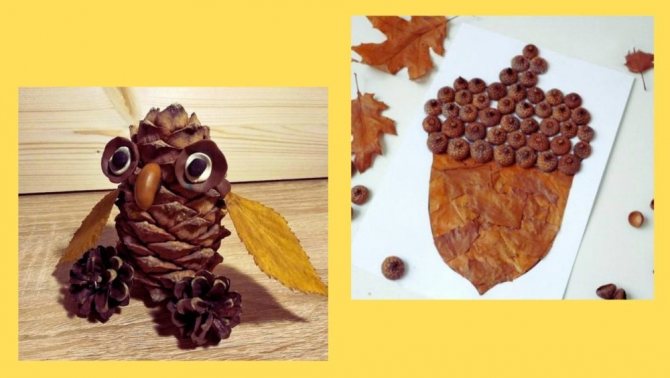
Wood parts
The activity develops memory and thinking abilities. Younger preschoolers will learn the names of plant parts.
Print out a realistic image of a tree, tell the children what a trunk, branches, roots are, explain that the collection of leaves is the crown. During the explanation, children should look at the picture.
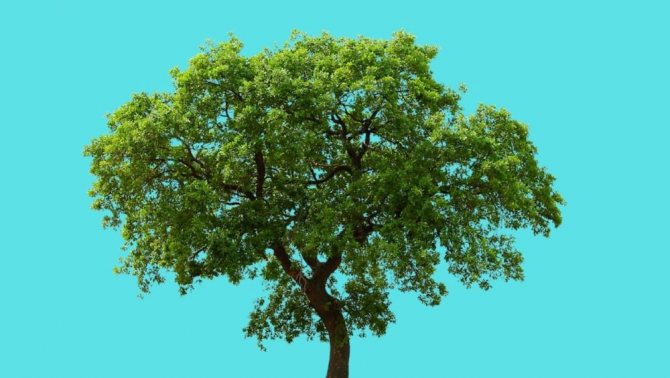
Didactic games “Trees” in the senior group
In the older group, preschoolers learn to distinguish, describe, classify, their ideas about the world around them expand, and speech skills develop.
Tell me about the leaf
The game teaches how to compose complex sentences; preschoolers' understanding of colors and shapes expands. For the activity, prepare dried leaves of different types of trees familiar to the children. Or print realistic images. Each student takes turns choosing the piece of paper that he likes more than the others and tries to describe it in detail.
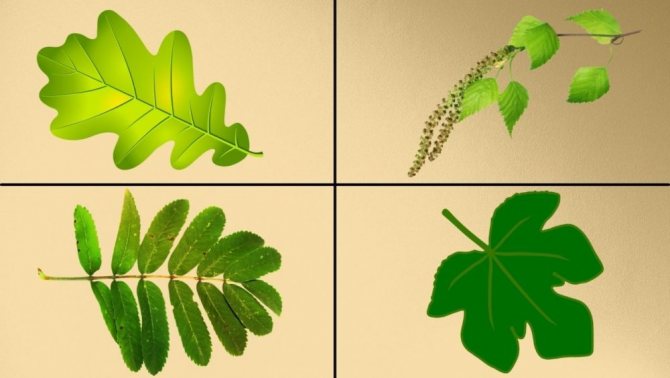
Find a tree
It is better to play the game in a park where there are many different types of flora familiar to preschoolers. Children look at the plants around them, while listening carefully to the teacher. And he talks about the tree without naming it. Based on the description they hear, children must guess what plant they are talking about. For example, here is a description of the rowan: “A slender tree with long and narrow leaves, collected together in several pieces. In autumn, berry clusters form on the branches. The berries are small and red; bullfinches love to feast on them.”
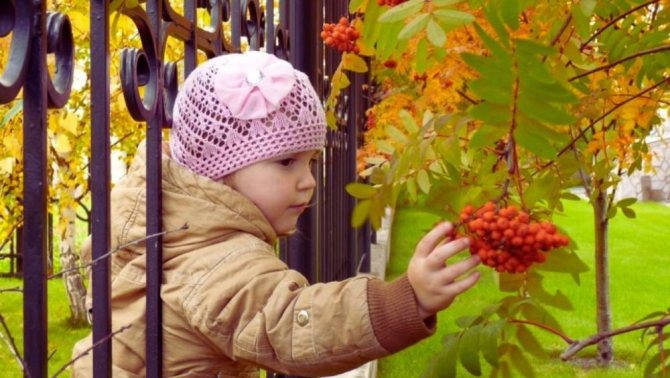
I am a tree
Outdoor play promotes physical development, stimulates imagination, and broadens one's horizons. Before class, discuss with your students that trees come in different shapes and sizes: with a narrow and wide crown, with branches pointing up or down. Let the students imagine that they are trees: their arms are branches, their legs are roots, their torso is a trunk. Each child imagines himself to be a plant of a certain type, but does not say what kind.
Each player takes turns standing in front of his comrades, using gestures and body movements to depict the tree and what is happening to it. The other players guess what their friend is trying to show. For example, when imitating an oak tree, a child demonstrates that he is strong, spreads his legs, sticks out his chest, and makes sounds that imitate the rustling of leaves in the wind, the chirping of birds on the branches. When depicting a willow, the player makes a sad face, imitates crying, and limply lowers his hands.
What's extra?
The game teaches you to classify plants according to key characteristics. For the lesson, make cards, each of which should depict 4 types of trees, one of which belongs to another category.
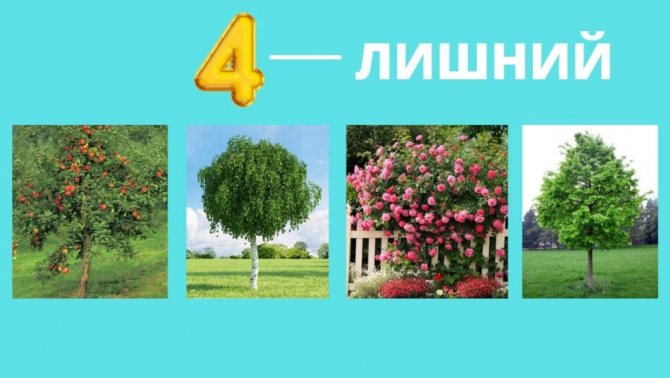
Players look at the images one by one, identify the odd plant, and select a unifying category for the rest. If the player makes a mistake, the right to move is transferred to the next child. The one who correctly identified the extra tree gets a point. The winner is the one who scores the most points.
Here are examples for the game:
- maple, aspen, spruce, poplar - category of deciduous species;
- spruce, cedar, pine, chestnut - coniferous species;
- aspen, pear, cherry plum, apple tree - fruit crops;
- lilac, birch, jasmine, bird cherry - shrubs.
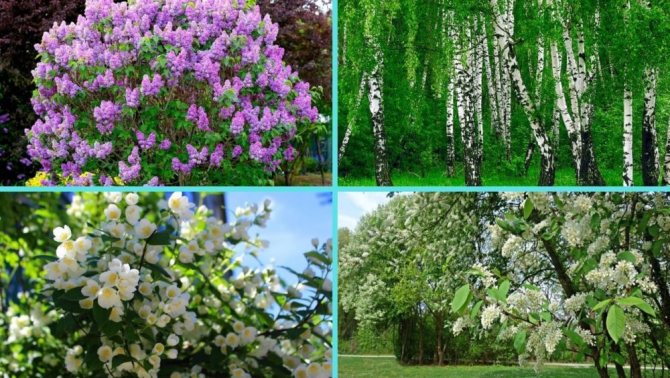
Fly to me, leaf
For active play, you need dried fallen leaves of different types and silhouette views of the same leaves. Players receive silhouettes one at a time. The teacher stands at the other end of the room and shows the dried leaves to the children. For example, he shows a maple leaf and calls: “Fly to me, maple leaf.” The player, who sees the corresponding outline, runs up to the teacher and talks about the features characteristic of the tree to which the demonstrated leaf belongs.
The game can be complicated by not naming the type of plant, but simply saying: “Fly a leaf to me.” Then the child, who has discovered the corresponding contour, must himself determine the species of the tree, then talk about it.
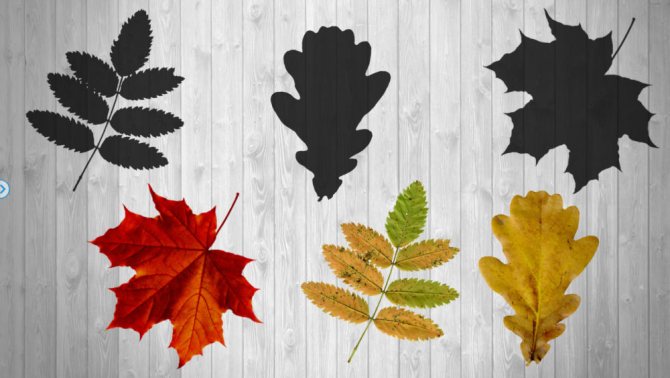
How do plants differ from each other: trees, shrubs and herbs?
The first thing that comes to mind is size, or more precisely, height. The trees are tallest, bushes are behind them, and grass is below them. This usually happens, but not always. In nature, there are low-growing trees, and grass sometimes grows taller than bushes. So the main difference is in the structure. In particular, the presence of a barrel.
The tree has a thick, hard trunk, the only one for the plant. It branches at the top. Damage to the trunk leads to the death of the entire tree.
Shrubs do not have one main trunk (or they have one, but it is very small and close to the soil) - they have numerous stems - branches: woody, thick, but not too strong; Moreover, they can die off and be replaced by young shoots - that is, the death of one or several branches will not lead to the death of the entire plant.
Herbs do not have a trunk at all; the entire plant is a thin soft stem that has no branches.
There are some differences in the life cycle: grasses can be annual, biennial, or perennial; shrubs are usually perennial, and trees are always perennials.
Abstract “Trees in Spring”
Ortangs to be used
Summary of organized educational activities in the middle group
About the event/Date:
Tarbieshi/Teacher:
Bilim take salas/Educational area:
society
Pәn/Item:
getting to know the outside world
Ө tpeli takyryp/Cross-cutting theme:
"Trees in Spring"
Takyryby/Topic:
"Trees in Spring"
Maksattaras/Goals:
1.Tarbielik - educational:
To cultivate a caring attitude towards flora and fauna, the ability to behave correctly in nature
2.Damytushylyk developing:
develop the ability to name the most common trees
3.Okytu-training:
Practice identifying trees by their fruits and leaves
Pedagogical technology / pedagogical technology:
gaming, health-saving
Resurstarmen kamtamasyz etu/Resource support:
toy squirrel, poster with a painted tree, glue, cut out children’s hands, pictures, presentation.
Bilingualdyk component. Bilingual component:
agash - tree
Ұ yimdastyrylgan қу қызмінін Barysy
1. yimdastyrushylyk kezeni/organizational moment
A squirrel came to visit.
Children, look, the squirrel brought me this poster. Trouble happened in the forest. It’s spring all around, everything is turning green, the leaves are blooming. And the trees in the forest stand as if in winter, they are offended by everyone. No one pities them, no one helps them. The squirrel asks us for help. Shall we help?
2.
Negіzi bolіmі/main part
Guess the riddle:
In the rain and heat, a friend, green and good, will help us, He will stretch out dozens of hands and thousands of palms to us.
(Tree.) -
That's right, this is a tree (shows a poster).
Do you think the tree is alive or not? Why? (It breathes, feeds, grows, reproduces.) How does a tree breathe? That's right, leaves. A tree inhales dirty air, which is emitted by factories, factories, cars, and gives off oxygen - this is the clean air necessary for people to live. -
Look at the leaf, what tree do you think it flew from?
(
From a birch tree)
-
So what is he like?
(
Birch)
-
This is a birch leaf.
By what signs can you recognize a birch? (
White bark)
-
Of course, the birch has white bark and a white trunk.
They also say about it: white-trunked. It is slender and has long thin branches. Move to the next leaf. -
The green coins flew away from the branch.
What tree did they fly from? (
From an aspen tree)
-
What leaves are these?
(Aspen. Similar to coins) -
Which tree lost this leaf?
(shows a maple leaf) (
Maple)
-
If this is a maple leaf, what kind of leaf is it?
(Maple) -
What does a maple leaf look like?
-
It looks like a star or a palm, look.
And to guess from which tree the next leaf fell, you need to solve a riddle. Guys, listen to one more riddle: A flock of scarlet bullfinches flies to visit her, They scurry along the branches, They peck at red berries. (
Rowan)
-
Correct.
Guys, what kind of tree is this leaf from? (from oak) -
that’s right, it’s from oak, so what kind is it?
– oak. Guys, look how the oak tree grows. (The board shows pictures of how a small oak shoot appears from an acorn or a presentation is shown). Fizkul -
Guys, we talked about trees that have leaves, what are they called?
– deciduous. What other trees are there? Which have needles instead of leaves. (
Conifers)
-
What coniferous trees do you know?
Children's answers (Christmas tree, pine, spruce, larch, cedar) -
What is the difference between pine and Christmas tree?
Children's answers. Well done. Guys, tell me, what can’t a tree live without? (
Without a root)
-
That's right, why does a tree need a root?
Children's answers (to take water from the ground, and to hold tight). What else does the tree have? Children's answers (trunk, branches, leaves). And when there are a lot of leaves on the branches, what can you call it? -(crown). Well done boys. And now we will play the game “It’s me, it’s me, these are all my friends!” You must listen carefully to the question and answer with words (It’s me! or it’s not me!). Is it clear to everyone? Let's start: The game “This is me, this is me, these are all my friends!”
— Who loves nature and plants trees in the spring? (It's me!). - Who likes to relax and litter the clearing? ( It's not me!). - Who wants to help, plant trees in the spring? ( It's me!). - Who wants to help, break trees, bushes? ( It's not me!). - Who loves mother nature in any bad weather? ( It's me!). —Who loves candy and throws candy wrappers everywhere? (It's not me!) Well, we played, but you and I forgot about the squirrel, and we promised to help her. Let's take your seats, we'll decorate the squirrel's tree with leaves. (children have previously cut leaves on their tables (children’s circled palms, glue, brushes, napkins, oilcloths). To do this, you smear your leaves with glue and glue them to our tree
3. Results /final part
Guys, look how great you are. The squirrel says thank you very much, you helped save the trees. Let's play the game "Nice words." And now we will smile, hold hands tightly, and make a farewell promise to each other: We will be friends with the trees, protect them and love them!


